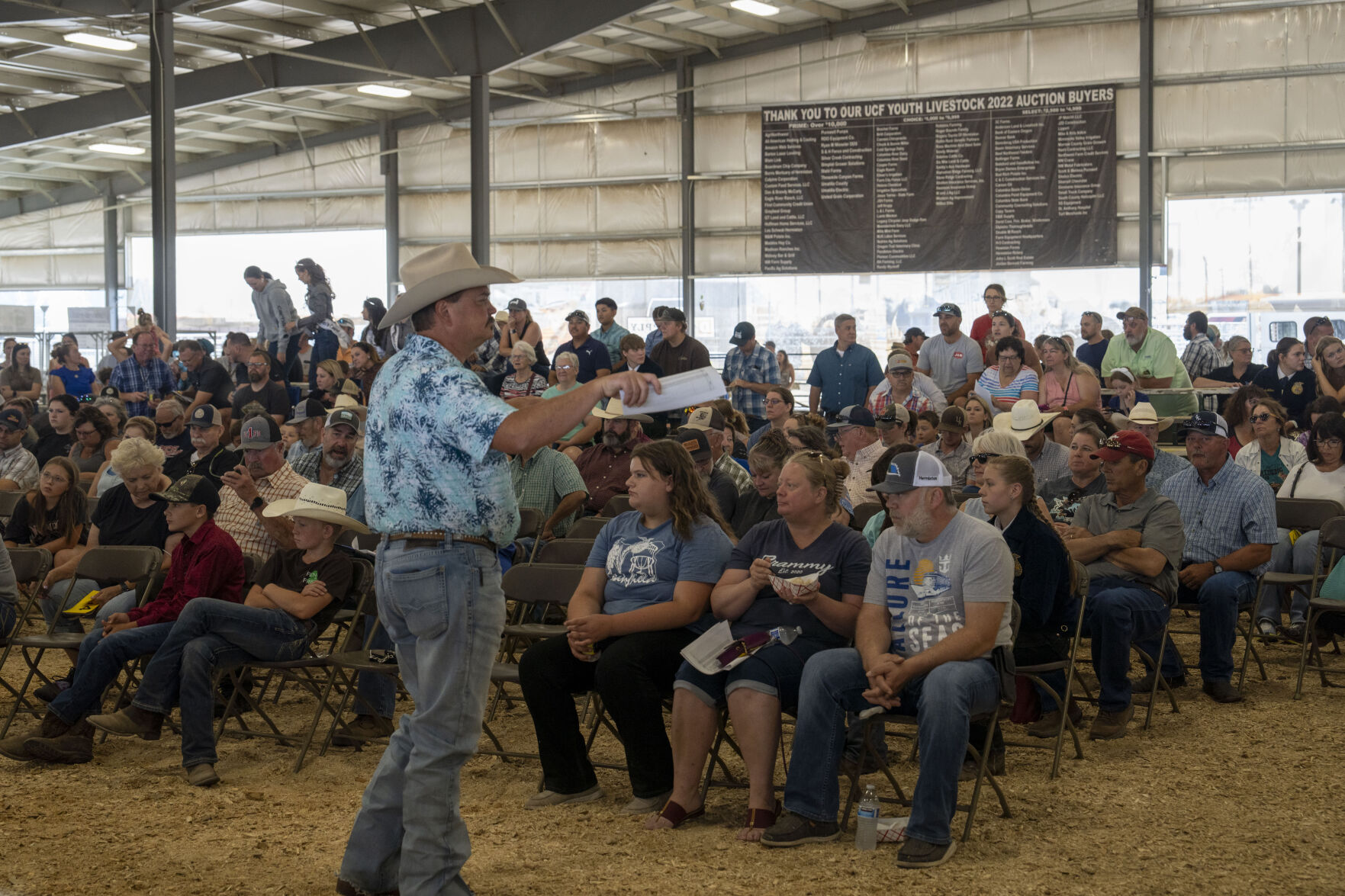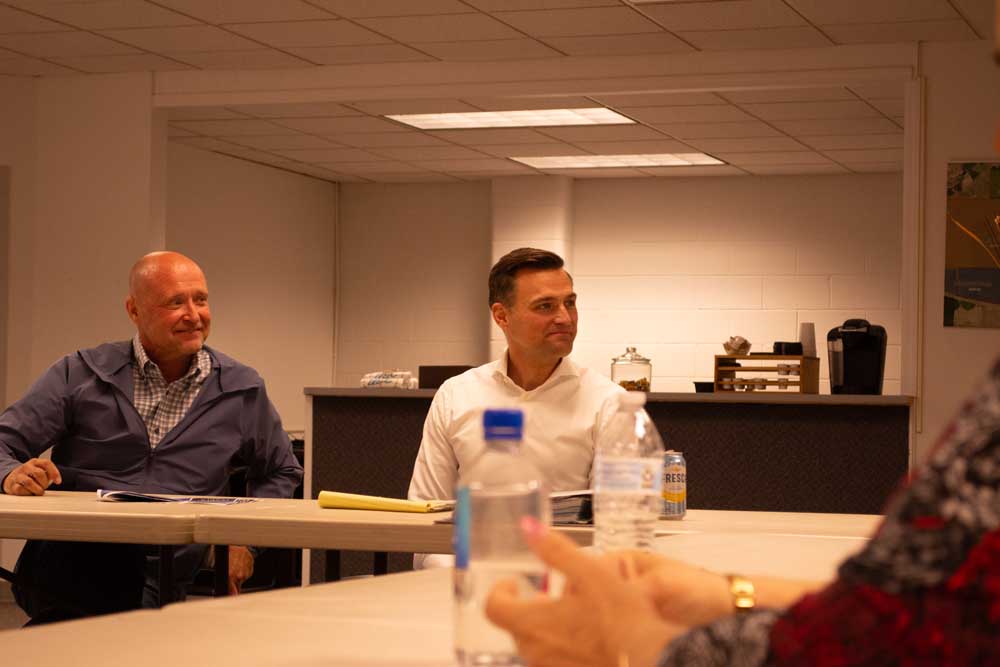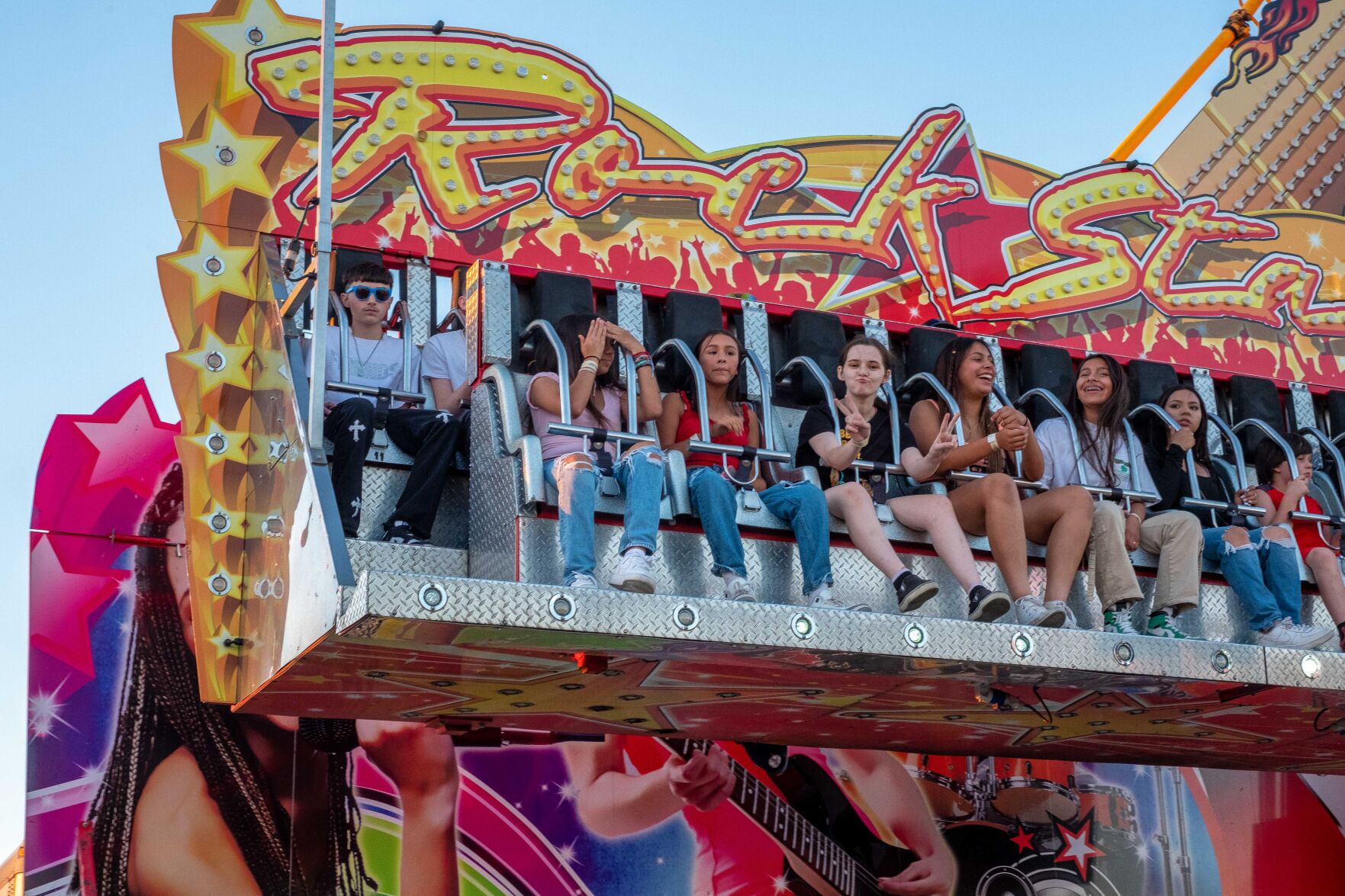World War II tail gunner leads M-F Veterans Day Parade
Published 10:00 am Monday, November 13, 2023

- Milton-Freewater Veterans Day Parade Grand Marshal Herald Reid, center, a 102-year-old World War II vet, rides in the parade Saturday morning, Nov. 11, 2023, in an all-original 1943 military Jeep owner John Ehart is driving. Ehart is a U.S. Marine Corps Korean War veteran.
MILTON-FREEWATER — Milton-Freewater resident Herald Reid, 102, was honored as the grand marshal of the Veterans Day Parade at 11:11 a.m. on Saturday, Nov. 11.
Trending
The local Benevolent and Protective Order of Elks Lodge No. 2146, which hosts the annual parade for local veterans, chose Reid.
In the 1940s, Reid set out to be a teacher but decided to go to work instead for the government. However, he ended up as a tail gunner on a B-17 in World War II.
He was born Sept. 29, 1921, in Emmett, Idaho. After high school, Reid attended Northern Idaho College of Education in Lewiston for two years and earned a degree in teaching elementary school and junior high. Instead of teaching, the young man decided to go to work for the government in central Idaho where they were diamond drilling for tungsten and other metals.
Trending
Service to his country
In early 1944, his life took an unexpected turn when he joined the U. S. Army Air Force to help in the war effort. Reid said he was stationed at Buckley Field in Denver and went to pilot pre-training at Denver University for six weeks. As it turned out, the military needed more gunners than pilots, so he ended up in Las Vegas for gunnery training.
He laughs when remembering there were only three casinos in Las Vegas and Main Street was just two blocks long.
After gunnery training, Reid went to Sioux City, Iowa, where they formed crews of pilots, co-pilots, gunners, navigators, bombardiers, flight engineers, radio operators, etc., and trained together for two months. His crew went to Lincoln, Nebraska, to pick up a plane, but he ended up in the hospital. It appears the pilot and co-pilot wanted to play touch tackle and Reid stepped into a hole where a pole had been removed.
After his leg healed, he was assigned to another crew. It was early November, and they flew to Newfoundland where they were greeted with 25 feet of snow. Reid said the snow was so deep they walked into the top story of the barracks.
From there, they flew to Greenland. It was Thanksgiving and 25 planes and crews were supposed to fly there. However, it was so cold they had trouble getting the planes to start and only two were able to make it. Food had been prepared for around 300 and only 24 were there to eat it.
“We had lots of food,” Reid said with a smile.
Eventually, his crew flew into Ipswich, England, and was trucked to the base at Mendlesham, England. There, they were assigned to the 34th Bomb Group, 391st Bomb Squadron. Reid flew 25 missions, as a tail gunner, over Germany — from Berlin to the mouth of the Rhine River in France. While on bombing missions, the planes caught a lot of flak from antiaircraft fire on the ground. Being the tail gunner was a dangerous position.
“I was one of the fortunate ones,” he said.
The skin on the planes was thin, so flak would punch holes and the skin would peel back. Reid’s plane had been named Queenie.
“She had so many patches from flak that she was the slowest in the fleet,” he explained. “But she was quite a plane.”
Whenever a plane flew a bombing mission, a picture of a bomb was painted on the nose. Queenie was highly decorated and had row after row of mission bombs.
After the war ended, Reid’s crew carried food to the flooded areas of Holland, as the people had flooded their land to keep the Nazis out. They then flew into Yugoslavia and picked up French prisoners of war, who had been in the German prison camps for many years.
When Reid returned to the United States, he was assigned to the Amarillo Air Base as a post detail clerk and in November 1945 was honorably discharged from the service.
Career in education
Returning to Idaho, he started teaching junior high. The veteran then went back to college, earned a bachelor’s degree and taught high school for eight years in Cottonwood, Idaho. Reid earned a master’s degree in administration from Washington State University.
In 1956, since Idaho didn’t have a retirement plan at that time, and Oregon did, he took a position as the chemistry/physics/general science teacher at McLoughlin Union High School in Milton-Freewater.
Around 1962 or 1963, Mac-Hi Principal John Turbyne asked Reid to be vice principal of the high school; he accepted that position and also taught advanced chemistry. He remembered his students had quite a learning experience when the Umatilla County Health doctor asked them to check the water from all the wells on the North and South Forks of the Walla Walla River for typhoid fever virus.
After 35 years in education, the vice principal retired in 1981. Reid was honored as Milton-Freewater’s man of the year in 1992 for his contributions to the community.
He was married in 1941, before going into the service, and proudly noted he and his late wife, Effie, were married for 69 years and five months. The couple had two children, Tanna Reid Hewitt (1946-2018) and Gavin, who moved back to Milton-Freewater to stay with his dad so he could continue to live in his home.
Reid was excited to be able to represent his World War II comrades and other veterans in his hometown parade honoring those who have served.









